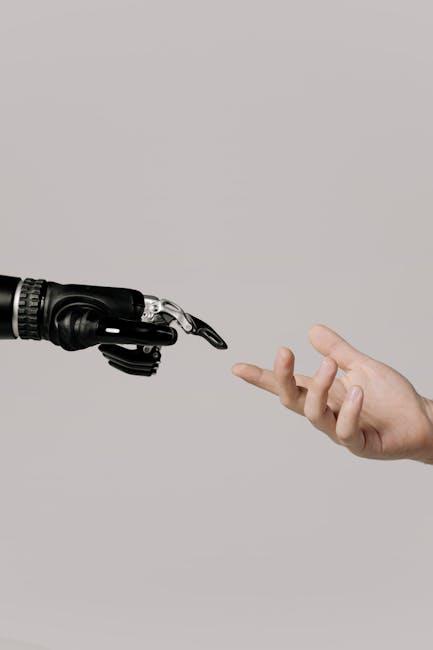
Robot Dentist Performs World’s First Fully Automated Procedure – Sky News
The future of dental care has taken a giant leap forward as a robot dentist successfully performs the world’s first fully automated dental procedure. Reported by Sky News, this unprecedented milestone marks a transformative moment in healthcare technology, illustrating how robotics and artificial intelligence (AI) are revolutionizing traditional dental treatments. In this article, we dive deep into the details of this groundbreaking achievement, discuss the benefits of robotic dentistry, and explore what the future holds for patients and dental professionals alike.
Introduction to Robotic Dentistry
Robotic dentistry is an emerging field that blends advanced robotics, AI, and high-precision engineering to deliver dental treatments with increased accuracy, efficiency, and patient comfort. Unlike conventional dental procedures conducted manually by human dentists, robotic dentistry integrates automated systems capable of performing complex tasks with minimal human intervention, reducing the margin of error typical in manual operations.
What Makes This Procedure Groundbreaking?
The robot dentist showcased in the Sky News feature is not just assisting but autonomously executing the entire dental procedure — from diagnosis to treatment completion. This fully automated approach has never before been achieved at this scale or complexity, making it a pioneering event in both dentistry and medical robotics.
Details of the Robotic Procedure
The automated dental treatment successfully carried out by the robot involved multiple stages:
- Digital scanning and diagnosis: The robot first captured high-resolution 3D images of the patient’s mouth to generate an accurate treatment plan using AI-powered analysis.
- Treatment planning: Based on the diagnostic data, the robot intelligently mapped out the procedure, deciding on optimal intervention strategies.
- Automated surgery and restoration: The robot performed the dental surgery with high-precision instruments and implanted restorative materials with minimal human assistance.
- Real-time monitoring and adjustments: Throughout the procedure, built-in sensors allowed the robot to adapt its movements instantly, ensuring safety and effectiveness.
Comparison: Automated vs. Traditional Dental Procedures
| Aspect | Traditional Dentistry | Robot Dentist Automated Procedure |
|---|---|---|
| Accuracy | Dependent on dentist’s skill – risk of human error | Sub-millimeter precision with AI guidance |
| Procedure Time | Often variable, longer for complex cases | Optimized and consistently faster |
| Patient Comfort | Variable, depends on manual technique | Minimized discomfort with steady robotic control |
| Consistency | Varies among practitioners | High repeatability and standardization |
Key Benefits of the Robot Dentist Procedure
As robotic dentistry gains traction, here are some of the most prominent benefits patients and dentists can expect from the use of robot dentists:
- Enhanced Precision: Robots can consistently perform dental procedures with elevated accuracy, reducing the risk of errors such as imperfect alignments or damage to surrounding tissues.
- Reduced Procedure Time: Streamlined, automated workflows promise faster treatment times, leading to less chair time and quicker recovery.
- Improved Patient Comfort: Soft, controlled robotic movements combined with careful monitoring minimize pain and discomfort during the procedure.
- Higher Efficiency: Automation lowers the physical and cognitive load on dentists, enabling them to focus on patient care and diagnostics.
- Access to Care: Standardized procedures may allow remote supervision and improved access in underserved regions via tele-dentistry robots.
Case Study: The First Fully Automated Dental Implant Surgery
The world’s first fully automated dental implant surgery was conducted successfully by the advanced robot dentist system at a leading medical robotics institute. Details of this landmark case include:
- Patient profile: 45-year-old adult with a single missing tooth
- Surgery type: Dental implant placement with guided bone regeneration
- Outcome: Implant placed with precision within 45 minutes, with no complications during or after the procedure
- Follow-up: Healing progressed smoothly with optimal osseointegration confirmed after 3 months
Practical Tips for Patients Considering Robotic Dental Procedures
If you’re intrigued by the highly advanced robot dentist procedure and considering it for upcoming dental treatment, follow these practical guidelines:
- Consult with your dental provider: Not all clinics offer robotic dentistry yet. Check if the procedure suits your dental condition.
- Ask about technology and safety: Ensure the robotics system has passed stringent regulatory approvals and clinical trials.
- Prepare for digital diagnostics: The procedure depends on detailed imaging; stay informed about the scanning steps.
- Discuss follow-up care: Automated surgery still requires post-operative monitoring and care plans.
- Understand costs and insurance coverage: Emerging technologies may have different pricing structures than traditional methods.
Expert Opinions and the Future of Robotic Dentistry
Leading dental experts and robotics engineers are optimistic about the continued integration of robots in dentistry. Key trends expected to shape the future include:
- Hybrid Human-Robot Collaboration: Combining human intuition with robotic accuracy for complex cases.
- AI-Powered Diagnoses: Advanced machine learning models will improve early detection of dental diseases.
- Expanded Tele-Dentistry: Robot-assisted treatments in remote or underserved areas under remote supervision.
- Personalized Treatment Plans: Detailed data-driven approaches customized to each patient’s needs.
Conclusion
The historic fully automated dental procedure by a robot dentist, as covered by Sky News, represents an exciting paradigm shift in dental care. Robotic dentistry promises exceptional precision, shorter treatment times, and improved patient experience. While still in its early phases, the integration of robotics and AI into dental treatments will likely become a cornerstone of modern dental practices worldwide, empowering clinicians and benefiting patients with safer, smarter, and more effective care.
As technology advances, staying informed and open to new treatment methods like robotic dentistry will help patients and dental professionals alike embrace the future of oral healthcare with confidence.


